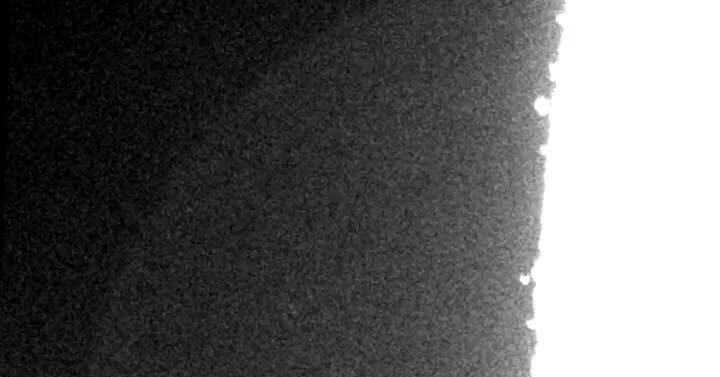Last week, a handful of watching telescopes captured something crashing into the moon. Then over the weekend, a second object punctured its silvery surface.
The two incidents were a reminder that the moon is not so much the serene orb we clearly see in night skies a few nights a month but rather a noisy battleground constantly gaining new craters.
The two lunar impacts were picked up by Daichi Fujii, a curator at the Hiratsuka City Museum in Japan, who keeps his telescopes trained on the moon’s surface. On Thursday, at 8:33 p.m. local time, he spotted a brief luminous outburst in the darkness. Then, on Saturday at 8:49 p.m., “I caught another bright one,” he said.
These flashes may have happened either side of Halloween, but there is nothing spooky going on here. Both were the result of asteroids smashing into the lunar surface.
Without an atmosphere to slow them, these two space rocks pounded into the moon’s volcanic soil at speeds of up to 60,000 miles per hour, about 30 times as fast as a fighter jet. The sizes of the objects are unknown, but even an asteroid just a few feet in length traveling at that speed would unleash a powerful explosion equivalent to a modest stockpile of dynamite — a fleeting firestorm that can be seen hundreds of thousands of miles away here on Earth.
Such lunar impact events are important to astronomers, who use them to figure out how often the moon is pummeled by smaller asteroids. Then, they can refine their estimates of how many larger asteroids are out there — the sort that can plunge through our planet’s atmosphere to potentially devastating effect.
Mr. Fujii, an astronomy enthusiast, is bewitched by the ever-changing nature of the night sky. “I want the public to enjoy science,” he said. And one way to do that is to show them how often the moon is struck by rocky missiles.
Mr. Fujii uses several telescopes in two locations — Fuji and Hiratsuka — to keep an eye on Earth’s alabaster companion. Software automatically detects motion and explosions on the lunar surface.
This setup has worked wonders: He has documented about 60 lunar impacts since 2011. Seeing two back-to-back impacts, though, is less common.
The first flash, on Thursday, emerged just east of the 70-mile-wide Gassendi Crater. The second appeared west of Oceanus Procellarum, or the “Ocean of Storms”— a colossal 1,600-mile-long plain filled with crystallized magma.
Sometimes flashes on the moon are made by illusions: cosmic rays that show up as strange sparks on telescopes. Were these two flashes genuine?
When asked, America’s space agency was unable to comment. “NASA is currently closed due to a lapse in government funding,” a spokesperson replied, via email. (The planetary defense observatories funded by NASA continue to operate during the shutdown.)
The European Space Agency’s own telescopes did not see the flashes, as the moon was too bright when seen from Europe at the time they occurred. But because several telescopes in Japan caught the same glimmers from different angles, it’s easy to call them asteroid strikes.
“Those impact flashes seem real,” said Juan Luis Cano, an aerospace engineer with the European Space Agency’s Near-Earth Object Coordination Centre. “What caught my eye is that they both seem to be somewhat above the average in terms of flash size” — suggesting they might have been more energetic impacts than usual.
The provenance of these asteroids isn’t certain. But Mr. Fujii suspects they might have come from the Taurid meteor shower, which streams off the Comet Encke. The Taurids, which peak this month, are known to feature larger-than-average meteors that move at particularly high speeds. It wouldn’t be surprising, then, if some crashed into the moon instead of flaming out in Earth’s atmosphere.
Mr. Fujii hopes that his vigilance will help improve lunar security. Both space agencies and private companies are seeking to make the moon an inhabited place — something not without its risks, including potential space rock strikes.
“Understanding the frequency and energy of impact flashes can be used to inform the design and operation of lunar bases,” he said.
The post What Were Those 2 Spooky Flashes That Lit Up the Moon? appeared first on New York Times.




